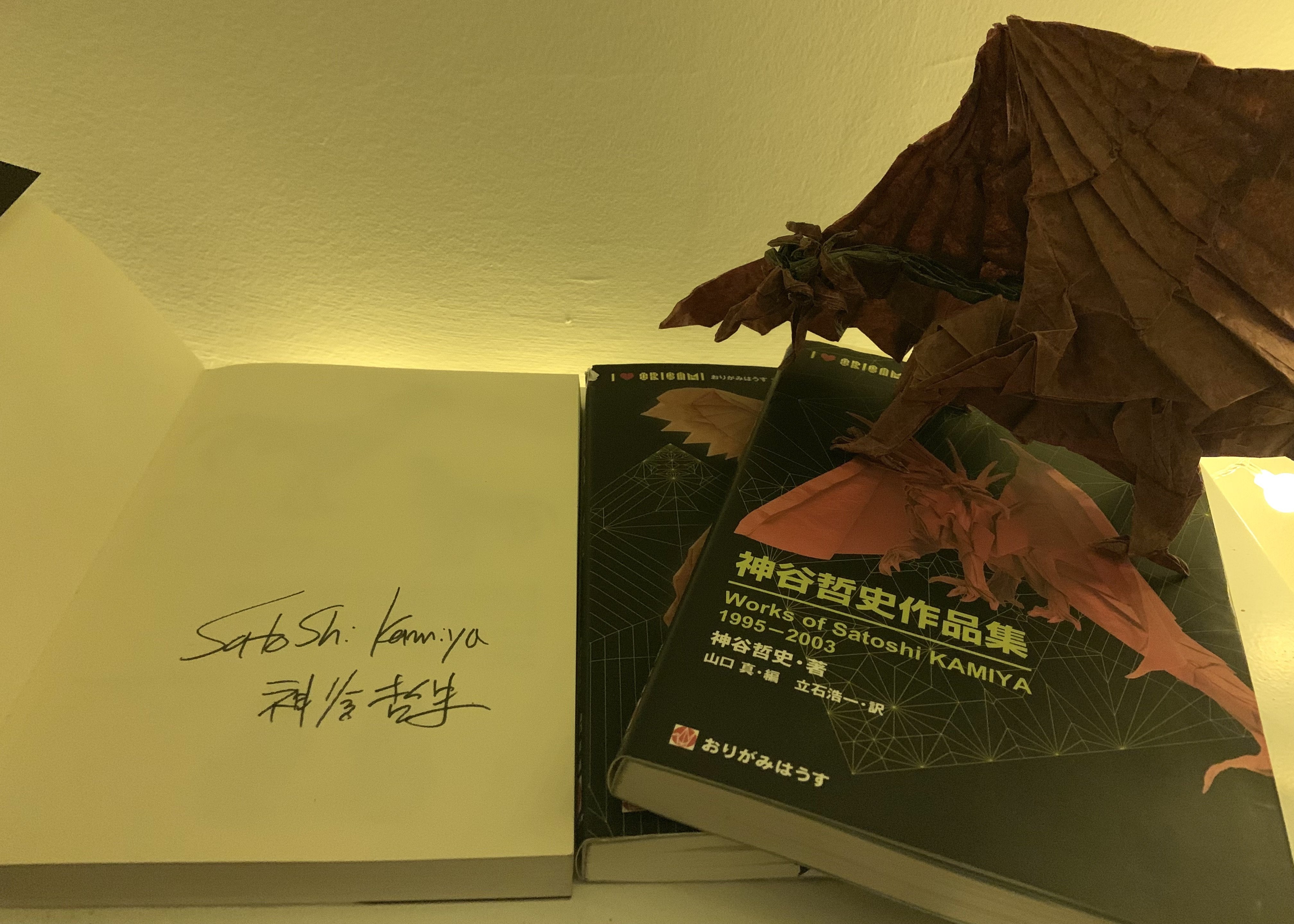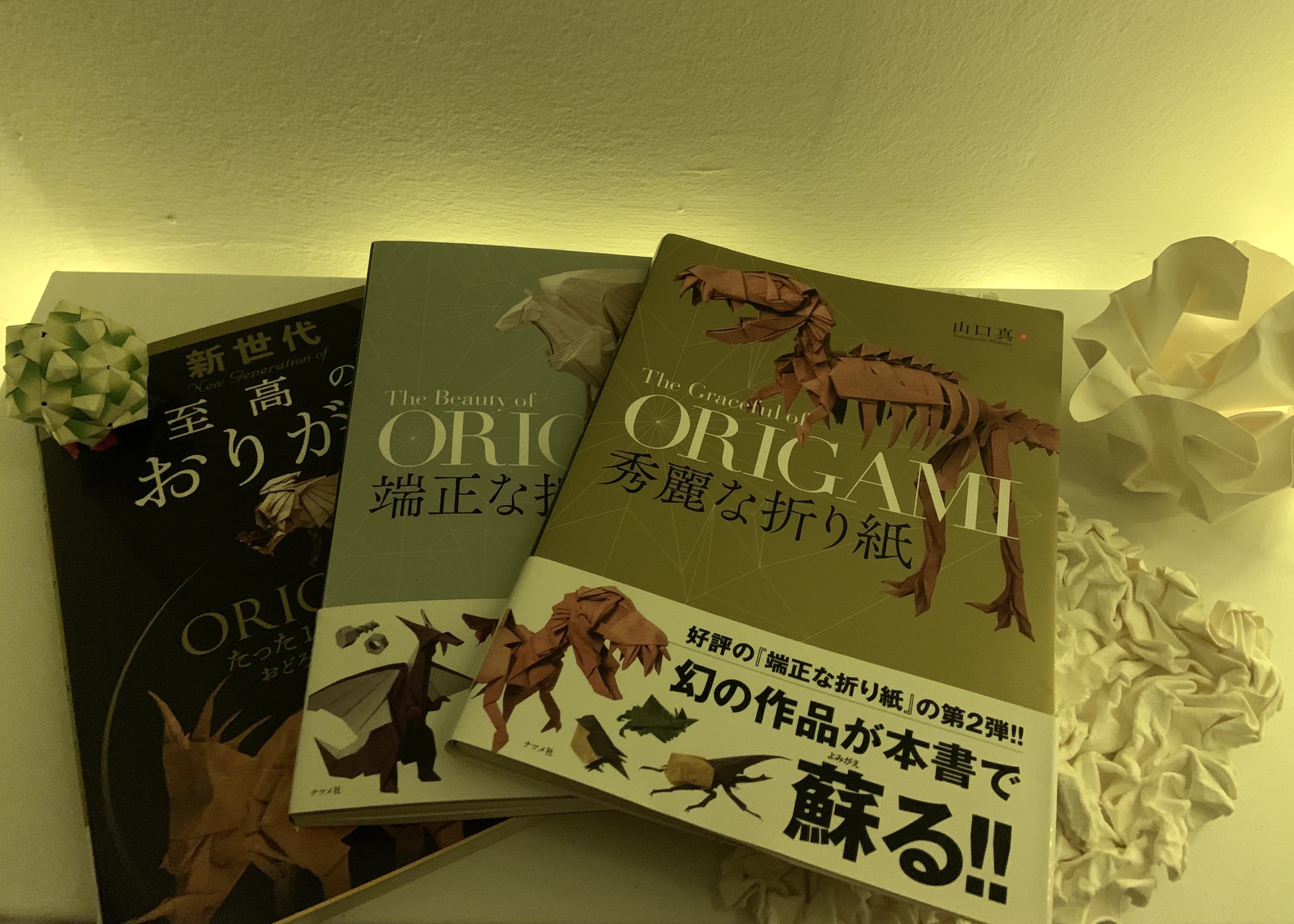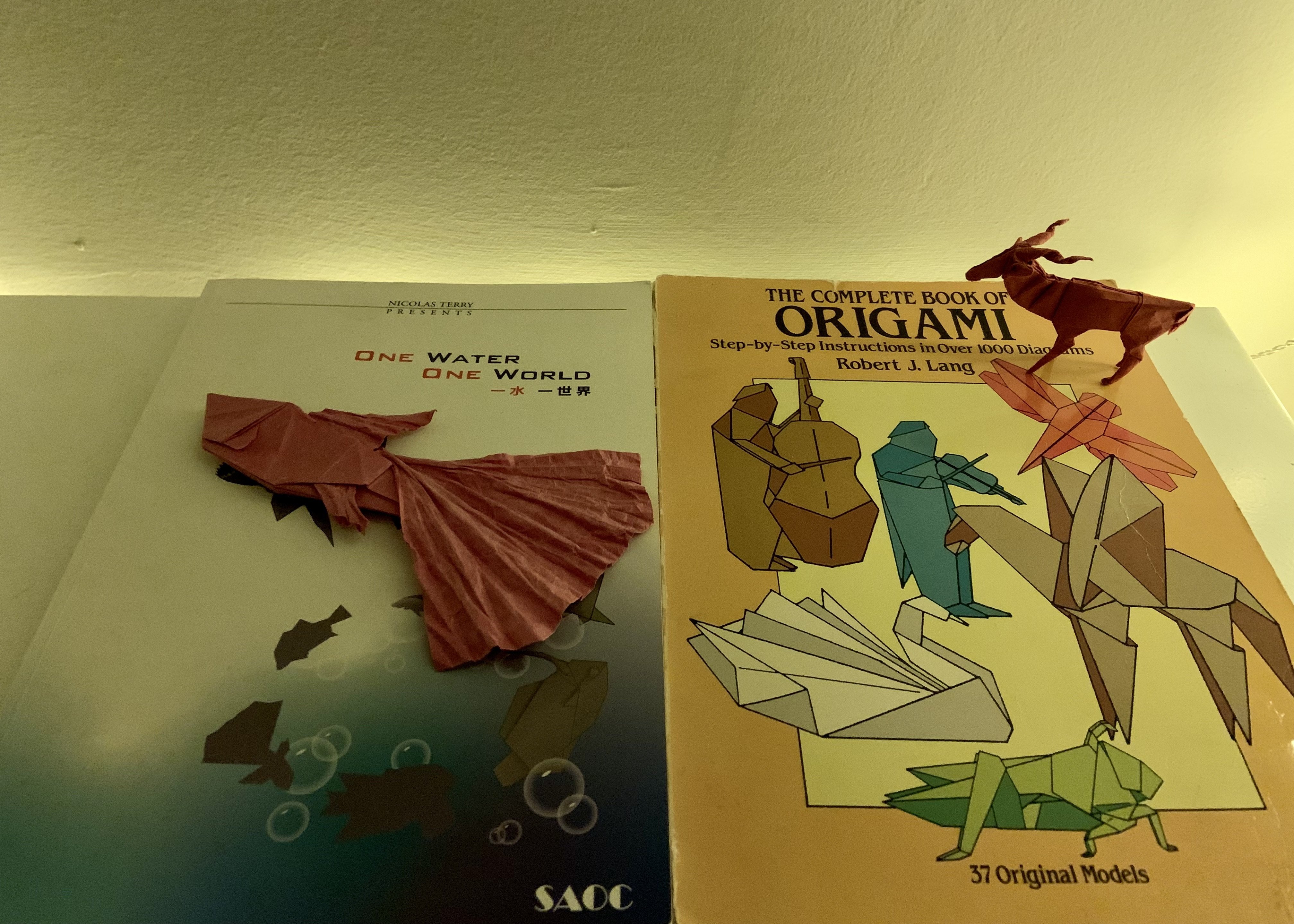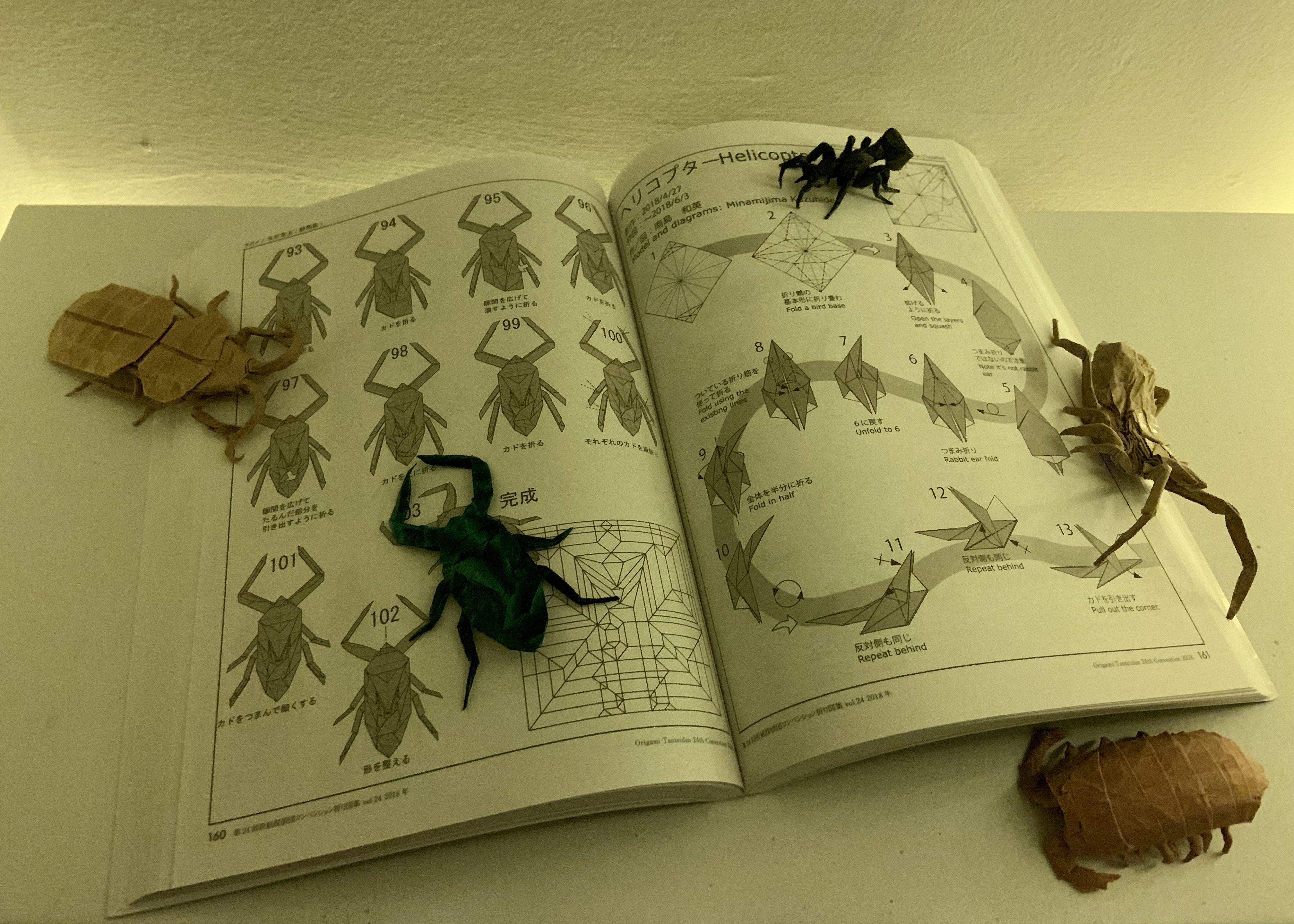Elijah Perkins
Origami—An Art of Reproduction
My collection is a broad display of origami books, consisting of designers from the United States, Japan, and other countries abroad. Convention books also take a high place in my collection, as they represent a very physical location to me, some place I attended myself and furthermore are books which I hold memories in. I believe that origamis greatest attribute is its reproductive capability, an art based on teaching and sharing is an art which is enjoyed by the most people - subsequently books are one of the best ways to share and spread an art.
—Elijah Perkins
View his full essay.
View his bibliography.

Kamiya, Satoshi, et al. Works of Satoshi Kamiya 1995-2003. Origami House, 2005.
Kamiya, Satoshi, et al. Works of Satoshi Kamiya 2: 2002-2009. Origami House, 2012.
Kamiya, Satoshi, et al. Work of Satoshi Kamiya 3. Origami House, 2019
These three books are all hand signed by the author, whom I met in 2019 at a convention in New York. There are unfinished models between the pages, many of which I started years ago but never finished. There is some mild ripping on the outer protective cover of the book, but for the most part, I keep the books as new as possible.

Yamaguchi, Makoto. The Beauty of Origami. Natsume, 2015.
Yamaguchi, Makoto. The Graceful of Origami. Natsume, 2017.
Yamaguchi, Makoto. New Generation of Supreme Origami. Seitosha, 2018.
The three books by Makoto were all gifted to me by my mother, who encouraged my delving into the art. The Graceful of Origami was the first truly complex book I owned and has some of the most significance to me as I took it with me wherever I traveled.

One Water One World. L'Atlier Du Gresivaudan, 2019.
Lang, Robert J. The Complete Book of Origami. Dover Publications, 1988.
This book is one of my first origami books. It has a mixture of complexity when looking at diagrams, and besides the age of the book, the models are very diverse and groundbreaking for the time. I’ve personally learned to dislike Lang's design style, but this book is one of my favorites due to its historical and personal significance.

